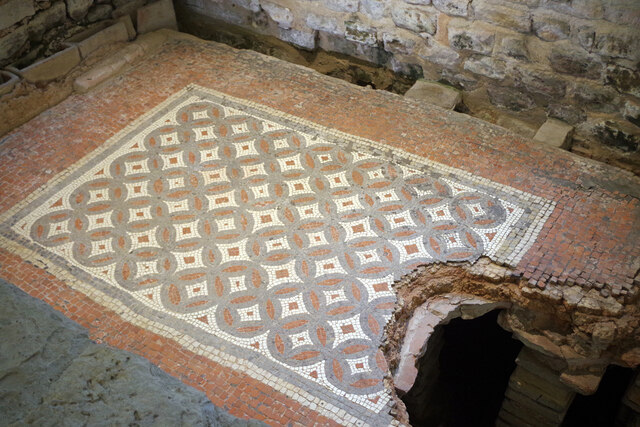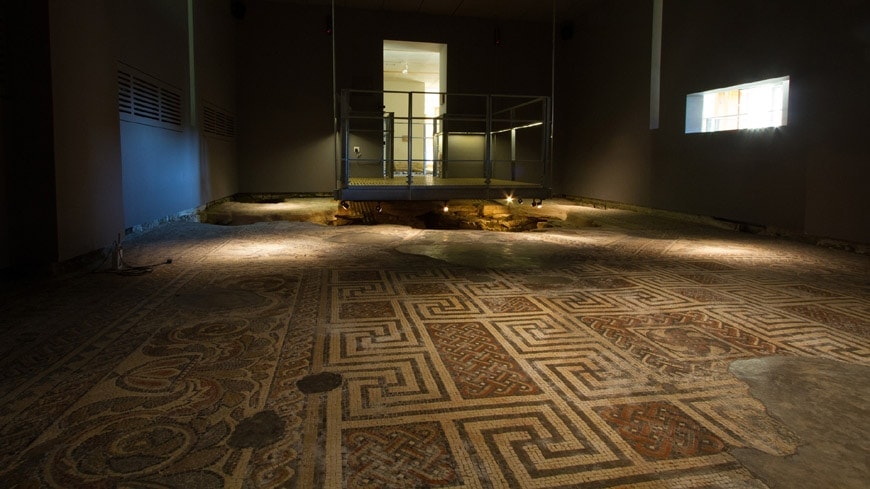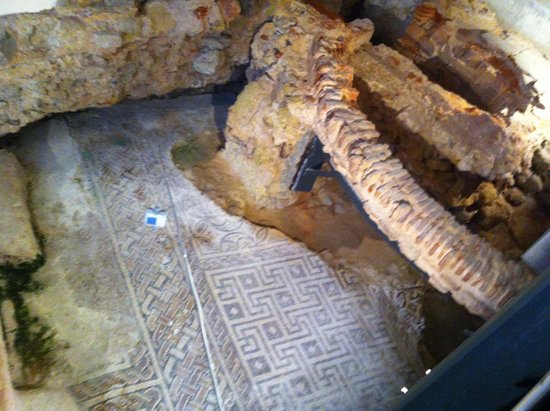Chedworth Roman Villa, located in the picturesque Cotswold Hills of Gloucestershire, England, offers an extraordinary glimpse into the luxurious lifestyle and advanced engineering of Roman Britain. Constructed around 120 CE and evolving over centuries, the villa exemplifies the Roman mastery of architecture, art, and innovation, while serving as a cultural hub in its time.

Strategic Location and Historical Context
The villa’s position near the River Coln and the Fosse Way Roman road was ideal for agricultural prosperity, trade, and communication. Its proximity to Corinium Dobunnorum (modern-day Cirencester), a major Roman settlement, underscores its role as part of a wealthy and Romanized region. The villa likely belonged to an affluent family, showcasing the social hierarchy and economic stability of Roman Britain.

Engineering Prowess: The Hypocaust System
One of Chedworth’s most remarkable features is its hypocaust system, a sophisticated underfloor heating network. This engineering marvel utilized a furnace to generate hot air, which circulated through raised floors supported by stone or tile pillars. Wall flues distributed heat vertically, ensuring an even warmth across spaces like the tepidarium, or warm room, and the bathhouses. These systems, integral to Roman architecture, highlight the era’s focus on comfort and technological innovation.

By its later phases, the villa incorporated both steam and dry heating facilities, making it one of the most advanced bath complexes in Roman Britain. Such developments underscore the Roman emphasis on hygiene, relaxation, and community gatherings.
Artistic Brilliance: Mosaic Masterpieces
The villa’s mosaic floors, adorning at least 15 rooms, stand as a testament to the artistic sophistication of the time. These mosaics, crafted with intricate geometric patterns and vivid mythological scenes, demonstrate the skill of Roman artisans. A particularly notable example in Room 28 dates back to the 5th century CE, representing a rare continuation of Roman artistry beyond the empire’s official decline in Britain.

These floors not only served decorative purposes but also conveyed the wealth and cultural aspirations of the villa’s inhabitants, blending Roman and local influences.
Cultural and Religious Insights
A key feature of the villa is the nymphaeum, a sacred shrine built around a natural spring and dedicated to water nymphs. This blending of Roman engineering and spirituality reflects the cultural richness of the era. The nymphaeum symbolizes the Romans’ reverence for natural elements and their integration of local traditions into their religious practices.

The presence of such features suggests that the villa was more than a residence—it was a place of worship, leisure, and social interaction, embodying the Roman way of life.
Continuity and Historical Legacy
Even after the official withdrawal of Roman authority in 410 CE, evidence suggests that Chedworth Roman Villa remained in use. Renovations and modifications during the 5th century CE indicate sustained prestige and adaptation to changing circumstances. This enduring occupation speaks to the lasting impact of Roman culture on Britain’s elite households.
Today, Chedworth Roman Villa stands as a window into the past, providing insights into the daily lives, technological achievements, and artistic expressions of ancient Romans. Managed by the National Trust, it continues to captivate visitors with its well-preserved features and rich history.
Conclusion
Chedworth Roman Villa is a striking example of Roman Britain’s blend of luxury, innovation, and cultural adaptation. Its hypocaust heating systems, vibrant mosaics, and religious elements highlight the opulence and ingenuity of the time. As a symbol of both continuity and change, Chedworth remains a cornerstone for understanding the Roman legacy in Britain.
For further exploration, visit the National Trust’s official site or delve into Roman Britain’s broader historical narratives to uncover more about this extraordinary site.

